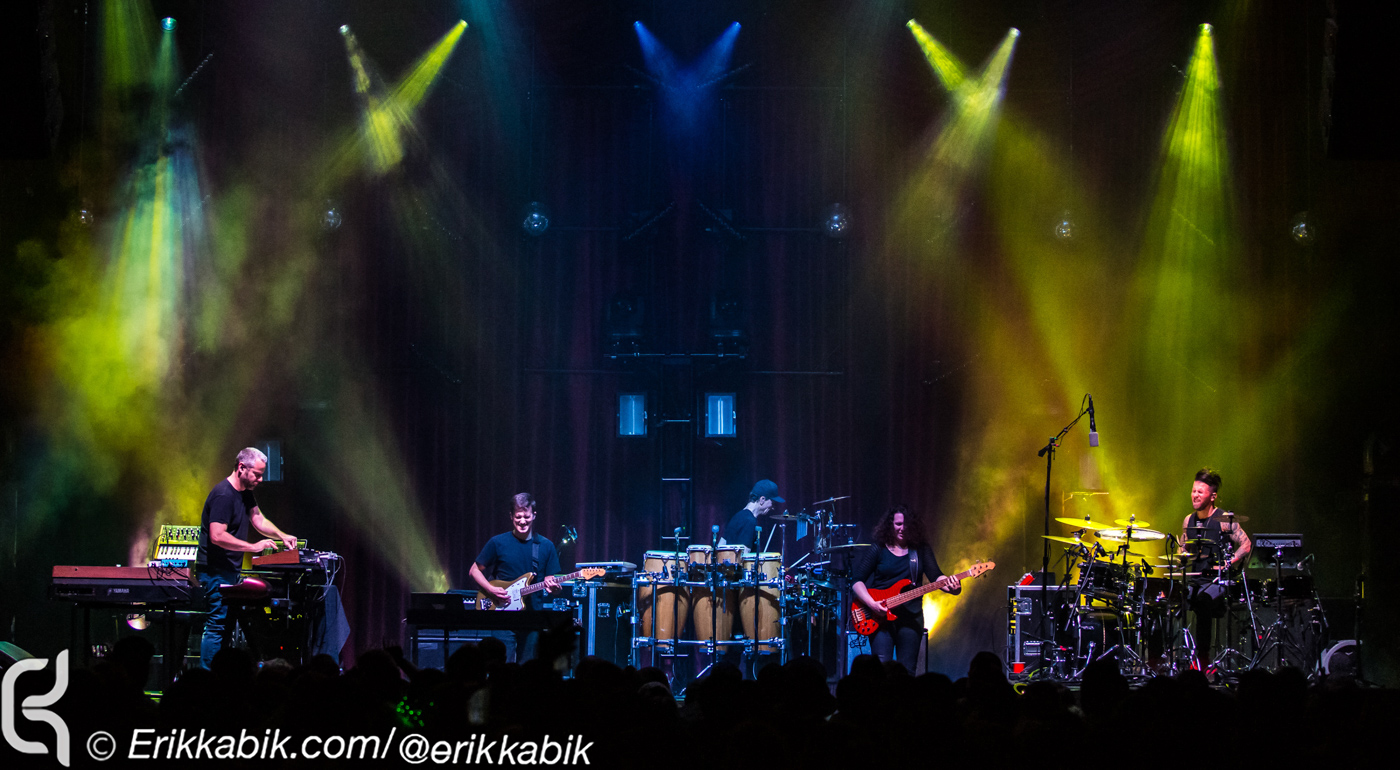The Core: STS9 on 20 Years of Livetronica

20 YEARS LATER
Oct. 3 was the date that everybody remembered as the 20th anniversary, so we thought it would be fun to play Artifact again in a grimy club [Knoxville, Tenn.’s The Mill & Mine] and have this smaller, more intimate dance party. We surprised everybody in a classy way and gave out pamphlets when everyone walked in that said what we were going to do.
Jeffree Lerner: We like to dub it the “first 20 years.” The overall variety and vibe of where we’re at is so creative and inspired. We are trying to find ways to let our fans in a little bit and show them this historical perspective. It’s mind-blowing to think that we’ve had this honor of creating music and traveling and sharing our art for 20 years. We take that more seriously now than we ever have.
UNCOVERED ARTIFACT
JL: Artifact was the first album we’ve chosen to do; it definitely holds a lot of great memories for us as the creators, and the feedback we’ve gotten from fans has revealed how much that album means to them. Playing it was challenging for us in a different way, too. Only a handful of those songs were in rotation and, some, we’d never played live or with Alana [who joined in 2014]. It’s a goal of ours to really increase our repertoire—to be able to play everything we put out on one of our albums.
AR: We didn’t want to look at it as, “Let’s play it top to bottom, note for note.” We wanted to play it in a way that was reflective of where we are as a band. We’d never played “Peoples part II” or “Native End” electric. And we did “Music, Us” totally differently.
ANOTHER NEW DAY
AR: We have so much new material. Last February, we built a studio in Santa Cruz, Calif. We’ve had so much fun working in the studio, whether its things like “Real & Imagined” that have been sitting on a drive waiting for us to finish or just free improvising. We’re really interested in releasing music in more of a piece-by-piece, single format because it suits how we’re feeling right now, which is just working on a lot of different music and remixes. Everything’s wide open now.
The Universe Inside was an album that we had to make, a mission—we had to finish it, and we started some of that material the first day we ever played together when I joined. “New Dawn, New Day” was a song that we wrote together from the get-go as a means to communicate what we were feeling. And then there were some songs that [the rest of the band] had been working on for a while, like “Out of This World.” Now we’re free to work on what we feel like.
ALANA AND EVERYTHING AFTER
JL: The improvisational aspect of our performance is maturing. We are working to create spaces for improvisation within structured songs; we want a balance. There isn’t one song we play the same since Alana joined the band. She’s brought herself 100 percent into this group. We didn’t go, “Alana, here’s a song—let’s go play it!” We woodshed them all during our practices—went through every song and shortened sections or lengthened sections. We flushed our repertoire and refined it. Simplifying has been a big lesson from all of that. Even in the songwriting, we are really boiling everything down to what’s really needed. We are excited to get up to some mountain and ski towns in January—the energy up there is pretty crazy. And now we’re looking forward to some big summer festivals and our next Red Rocks show. [We’re] also trying to put together a fest of our own, though that might be another year away.
AR: As a fan, I like to say I have a pretty deep knowledge of the repertoire, but it’s not like when I joined I said, “Hey guys, remember this song?” When we started playing together officially, we took six weeks and just went through everything, studying the way songs like “Moonsocket” have changed like jazz tunes. Then, we went back and discussed it as a group and said, “What works? What do we want to change?”
GETTING AXED AR: We’ve taken “Axe the Cables” to a different place than where it started—it turned into a jazz quintet. The first one I was a part of at Red Rocks was interesting because I had just joined the band and I was renting a house that had a beautiful grand piano. And then [guitarist] Hunter Brown would come over and he would play with us. And it was a very organic way of breaking the songs down, which reveals the songwriting. You might think, “How can I play a song like ‘Vapors’ without the electronic elements in it?” It’s been fun for us to loosen the range a little bit on what “Axe” can be, so that we could just explore this whole different approach.



















